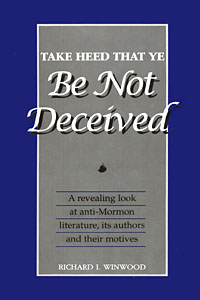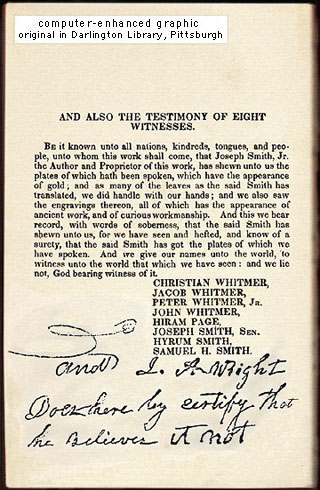MCB wrote:...
At least we have developed a scenario with the Conneaut witnesses that explains some of the inconsistencies, although their most basic observations, I believe, were correct.
I have yet to see our critics point out a single item in those 1833
witnesses' statements which is demonstrably false. You may recall
that Robert and Rosemary Brown attempted to publish such falsehoods,
but failed. -- http://solomonspalding.com/Lib/Brn1984b.htm
LDS writer Richard I. Winwood also attempted to prove the 1833
statements false, but again that attempt failed.

http://solomonspalding.com/Lib/winw1995.htm
The "basic observations" of the 8 witnesses published in the Howe book
include their names, personal facts, periods of residence near Spalding,
etc. Evidently their memories of this information is no longer subject
to question, and we will see no more attacks along the lines pushed by
the Browns and Winwood.
I'm prepared to admit that SOME of the information supplied by those
8 witnesses may be wrong. I'll leave it to others to PROVE them wrong.
Assuming that at least a few of the assertions in the Howe book's
statements are true, I believe that additional research will tend to
support those truths. In other words, my contention is that we folks
who support the conclusion of a 19th century multiple authorship have
nothing to fear from modern investigation of historical sources. Nor do
I suppose that new textual discoveries will prove us wrong.
If our goal is to ascertain historical truths, we should be prepared to
accept (and build upon) any new discoveries. We should welcome any
new perspectives offered regarding the composition and coming forth
of texts such as the Book of Mormon, Book of Moses, etc. I honestly
believe that all additional evidence brought forth in the months and
years to come will support the 19th century multiple authorship claims.
The part played by Rigdon and others in that multiple authorship is
a minor factor, far less important than the multiple authorship itself.
UD
